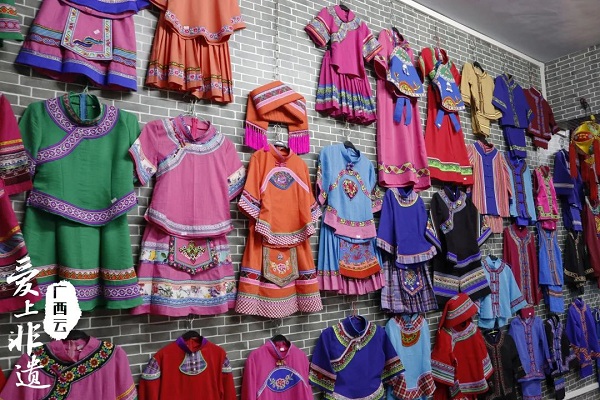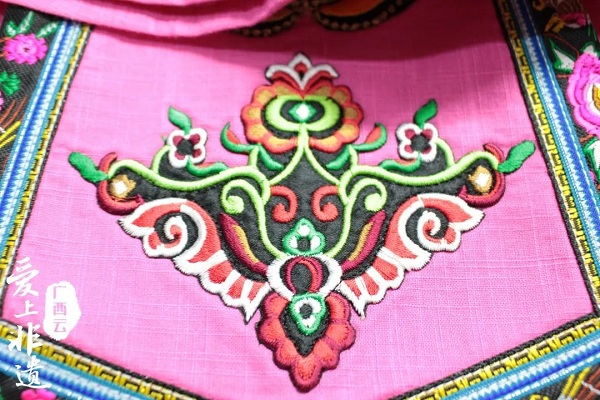Traditional Wuming Zhuang clothing

Zhuang clothing is displayed. [Photo by Chen Xianyi/Guangxi Daily]
The Zhuang ethic group has a long history and a unique culture, and its handmade clothing is significant for being integrated into every aspect of everyday life in the form of hats, tops, dresses, shoes and bags.
Zhuang clothing dates back to the Spring and Autumn Period (770-476 BC) and the tradition of handmade Zhuang clothing has been passed down by each generation.
Handmade Zhuang clothing was listed in the fifth batch of Guangxi intangible cultural heritages in 2014, and Lu Lanzhen was appointed as the representative inheritor of this skill in 2017.
Lu started to learn how to make Zhuang clothing at the age of 11 from her grandmother. Being the only woman of her generation in the family, her family expected a lot from her.
The process of making Zhuang clothing includes weaving, printing, dyeing, embroidery, which are all done by hand. Therefore, Zhuang clothing can take up to one month or even two to three years to complete.

The delicate embroidery on the Zhuang clothing. [Photo by Chen Xianyi/Guangxi Daily]
Raw materials such as hemp, cotton, banana, bamboo and wood grown in Lingnan are used to make gray cloth.
When dyeing, materials such as lime putty and sodium carbonate are used to melt indigo grass into a cream powder, which is then filtered out to create the indigo-colored dye.
Craftspeople mix the colored cream powder with water, rub it on the gray cloth, and then beat the cloth for pigmentation once or twice. Sometimes it may require beating the cloth seven to eight times to obtain better pigmentation.
The final step for making the clothing is embroidery. In most cases, nearly 100 types of colors will be used to make the clothing colorful and beautiful.
